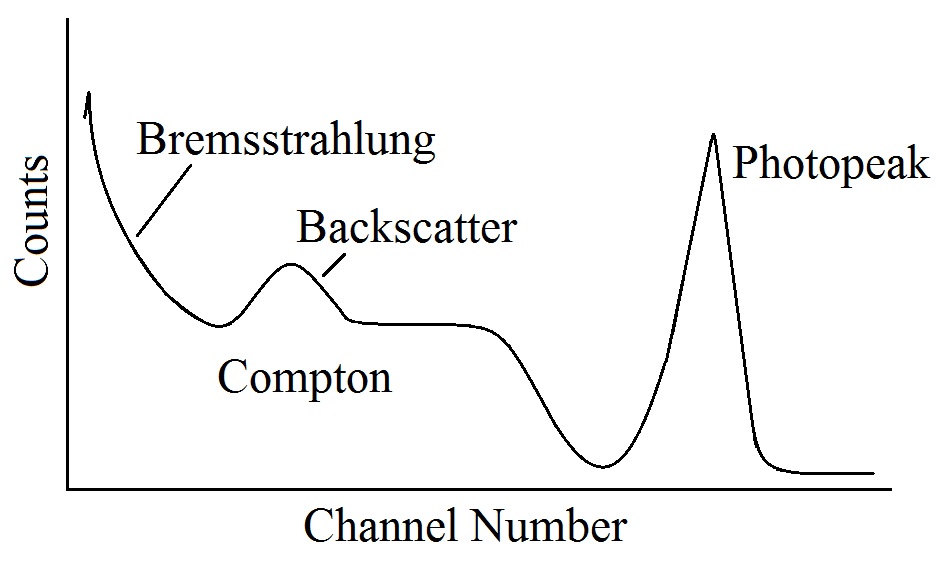To identify the radioisotopes present in four samples from different stages of the nuclear fuel cycle, using a Ge(Li) semi-conductor detector attached to a multichannel analyser.
Safety Assessment
- Wear a lab coat, disposable gloves and safety glasses
- Sources should be handled with tweezers
Theory
In semiconductor detectors, an electric field is applied to the detector volume. An electron in the semiconductor is fixed in its valence band in the crystal until a gamma-ray interaction gives the electron enough energy to move to the conduction band. Electrons in the conduction band can respond to the electric field in the detector, and therefore move to the positive contact that is creating the electrical field. The gap where the electron used to be is called a "hole" and is filled by an adjacent electron. This shuffling of holes effectively moves a positive charge to the negative contact. The arrival of the electron at the positive contact and the hole at the negative contact produces the electrical signal that is sent to the MCA. Germanium Detectors provide significantly improved energy resolution in comparison to NaI.
Not all gamma rays that are emitted by the source and pass through the detector will produce a count in the system. The probability that an emitted gamma ray will interact with the detector and produce a count is the efficiency of the detector. High efficiency detectors produce spectra in less time than low efficiency detectors. In general, larger detectors have higher efficiency than smaller detectors, although the shielding properties of the detector material are also an important factor. The energy of the gamma rays being detected is an important factor in the efficiency of the detector. By plotting the efficiency at various energies, an efficiency curve can be obtained. This curve can then be used to determine the efficiency of the detector at energies different from those used to obtain the curve. The shape of the pulse spectrum depends upon the way in which the gamma ray loses energy to the crystal. This occurs mainly in 3 different ways as follows:
1. The Photoelectric Effect
This is the most important at low energies, and consists of the ejection from an atom, by the γ-photon, of an orbital electron. The resulting pulse spectrum produces a single peak (photopeak), with the usual statistical spread.
2. The Compton Effect
In this process, only part of the energy of the γ-photon is transferred to an electron, producing a recoil electron together with a γ-photon of lower energy. The pulse spectrum obtained is continuous up to the Compton Edge. The degraded photon may be absorbed producing a simultaneous scintillation pulse. This secondary interaction may occur by any of the three processes, although pair production is unlikely because this only becomes important at high γ-photon energies, and the initial Compton effect would not be appreciable in this region. If the degraded photon has a low energy the photoelectric effect will be appreciable. This will occur at the high energy end of the Compton distribution which will therefore be reduced. Compton scattering from the surroundings may also occur giving rise to what is known as the backscatter peak and this usually occurs at about 0.2 MeV.

3. Pair Production
When the energy of the γ-photon is greater than 1.022 MeV, absorption may occur with the production of a positron and an electron. (The mass equivalence (E = mc2) of a positron or an electron is 0.511 MeV). Any energy in excess of 1.022 MeV is dissipated as the kinetic energy of the electron/positron pair, and is given up in the crystal producing a scintillation. Annihilation of the positron also occurs, with the formation of two 0.511 MeV gamma photons. These may be absorbed or escape; of those which are absorbed, a high proportion will give up their energy to the photoelectric effect.
Experimental procedure for Gamma Spectroscopy
Questions